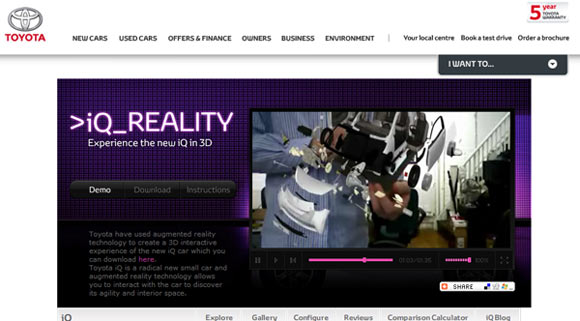 Can we augment reality for corporate purposes? Will we, in some maybe-not-so-distant future?
Can we augment reality for corporate purposes? Will we, in some maybe-not-so-distant future?
It’s not immediately obvious, at the moment, how a company might use augmented reality for practical corporate purposes:
- it’s still early days, so the technology isn’t – quite – there, though this is changing very fast
- the applications so far tend to be oriented around games, or retail
- it’s probably not going to be cost-effective for internal use – yet
- and it seems to be a largely solo experience, at the moment, due to device/technology constraints.
I always enjoy listening to a good speaker enthuse about a topic they know well, so I was looking forward to the BrunchBytes session on Augmented Reality – and I wasn’t disappointed.
Dr Paul Coulton walked us through an outline of augmented reality issues and information:
- a definition: augmented reality is a combination of the real and the virtual, is interactive – in real time – and is perceived as 3D.
- some of challenges of generating the virtual elements
- the development of technologies needed to create a believable display
- the pros and cons of different display devices
- techniques used to generate the display
- And finally a warning to consider what benefits it would give the user apart from being ‘cool’.
All of which makes an excellent primer for those of us with no expertise in the area. You can see his slides here.
The vital question is of course what would you use it for? Being able to check out information on your mobile by overlaying information on what you see while out and about is, of course, useful – but only for the individual, and for those companies for which it would work to make branding/adverts/offers available through that channel. How could you use it to communicate with your corporate stakeholders? Investors; journalists; job-seekers; suppliers…
One ideal would be to have a display—unmediated by any handheld device—that can be viewed and interacted with by more than one person – spatial augmented reality. But this isn’t easy, so any dream you might have of being able to display and interact with your financial data and future projections in 3D at an AGM will just have to wait a little longer.
However, there are some ideas around, a few of which just might have corporate application:
Recruitment
Coventry University is using Aurasma’s augmented reality app to promote themselves to prospective students via physical printed items (posters, logos) around the UK. For companies who recruit graduates in large numbers – or who recruit in specific niches likely to be interested in this kind of technology and its application – this might be a good use.
Work support
This could be an overlay of instructions over a keyboard, mixing desk or other instrumental display… it’s a stretch, but perhaps this might be helpful as part of your employee training programme, or even integrated with your social media monitoring workflow software (displaying information known about individuals, previous interactions or next steps requested by an earlier shift)
About Us
Several companies provide ‘flythroughs’ of their physical locations on their corporate website; maybe 3D versions could be done by augmented reality (see www.arsights.com for example)
Education
Rolls-Royce’s Journey through a jet engine was a great way of educating people on a core product. Could you use augmented reality to do something similar?
Collaboration
Although single user applications are interesting, I think the future for corporate use might be for collaboration. A recent research study looked at augmented reality technology used to support collaboration between different organisations in a crisis management scenario (in this case, rescue services, police and military personnel). While your crises are likely to involve media channels rather than physical environments, there might be some mileage here.
Maybe a better case could be made for augmented reality conferencing (see Zugara for example, or the NTT’s T-room), potentially adding back in those visual and interactive cues that we all use to help in communication, and which are stripped out by audio/2D conferencing. Even here, though, the costs and practical issues are likely to be overwhelming…
On-the-fly translation
There are a number of apps available now which use your phone camera to ‘read’ the text and superimpose the translation over the original text. See QuestVisual’s WordLens, for example, or Tencent’s QQ Hui Yan. Now that’s something that might be useful for a multinational.
What do you think: is augmented reality something you can see a corporate use for? And – perhaps more interestingly from my point of view – can you see a relationship with your corporate website?
————
The image above is from a Toyota video of their new iQ car. Do watch the whole video if you haven’t already seen it.
Want to see more? Some links I found interesting:
How Stuff Works
Sixth Sense
2011 Horizon Report
Intel’s OASIS
Lucy is Editor at Corporate Eye


